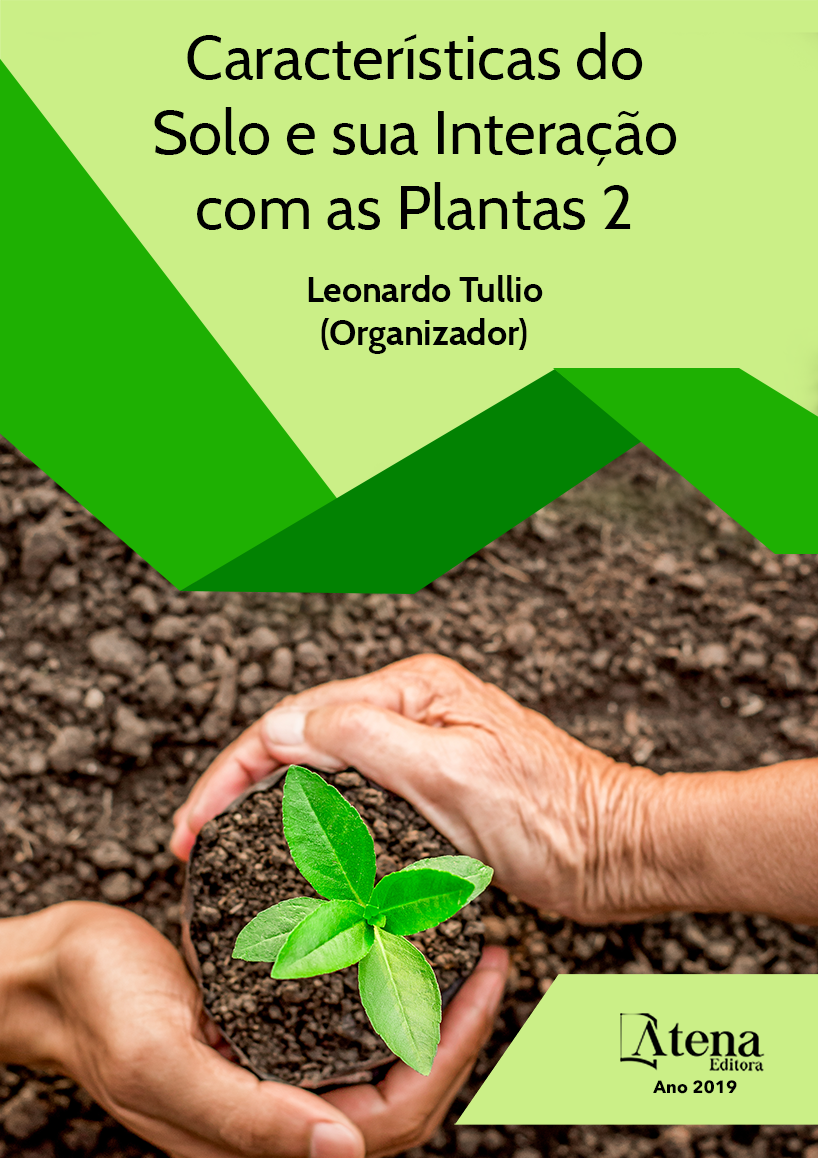
EFEITO DE MALHAS COLORIDAS E POLÍMERO HIDROABSORVENTE NO TEOR DE CLOROFILAS EM PLANTAS MELANCIA
A melancia (Citrullus lanatus) é uma
das mais importantes olerícolas produzidas e
consumidas no Brasil, principalmente na região
Nordeste. Em áreas de elevada temperatura, o
uso de malhas de sombreamento coloridas reduz
a quantidade de energia radiante e interfere
nas taxas fotossintéticas das plantas. Ainda, a
retenção de água e nutrientes proporcionada
pelos polímeros hidroabsorvente também pode
afetar a fotossíntese. Com isso, o objetivo
desse trabalho foi avaliar a influência de malhas
de sombreamento e concentrações de polímero
hidroabsorvente no teor de clorofila de plantas
de melancia. O trabalho foi realizado em casa
de vegetação, organizado experimentalmente
no delineamento inteiramente casualizado, em
esquema fatorial 3x4, sendo três ambientes de
cultivo (sol pleno; malha de cor preta e malha
fotoconversora de cor vermelha, ambas com 50
% de sombreamento) e quatro concentrações
de polímero (0,0; 1,5; 3,0; 6,0 g L-1 de substrato),
constituído de cinco repetições por tratamento.
Procedeu-se análises dos teores de clorofila
a, b e total. O sombreamento utilizando
malhas provoca decréscimo nos teores de
clorofila e o uso de polímero hidroabsorvente
na concentração 1,5 g L-1 favorece o aumento
destes em plantas de melancia.
EFEITO DE MALHAS COLORIDAS E POLÍMERO HIDROABSORVENTE NO TEOR DE CLOROFILAS EM PLANTAS MELANCIA
-
DOI: 10.22533/at.ed.17819171022
-
Palavras-chave: Citrullus lanatus, sombreamento, taxas fotossintéticas
-
Keywords: Citrullus lanatus, shading, photosynthetic rates
-
Abstract:
Watermelon (Citrullus lanatus) is
an important oleraceus grown and consumed
in Brazil, mainly in the northeast region. In high
temperatures areas, the use of colored shading
nets reduces the excessive solar radiation
and step in the photosynthetic rates of plants.
Furthermore, the retention of water and nutrients
generated by hydro-absorbent polymers can
also affect the photosynthesis. Thus, the aim
of this work was to evaluate the influence of
shading nets and hydro-absorbent polymer
concentrations on the chlorophyll content of
watermelon plants. The work was carried out in
Características do Solo e sua Interação com as Plantas 2 Capítulo 22 198
a greenhouse, distributed in a completely randomized design, in a 3x4 factorial, with
three cultivation environments (full sun, black net and photo-selective red net, both
with 50 % shading) and four doses of polymer (0.0, 1.5, 3.0, 6.0 g L-1 substrate), with
five replicates per treatment. Chlorophyll a, b and total contents were analyzed. The
shading using nets decreased the chlorophyll content and the use of hydro-absorbent
polymer in the dose 1.5 g L-1 favors the increase of these in watermelon plants.
-
Número de páginas: 15
- Breno de Jesus Pereira


